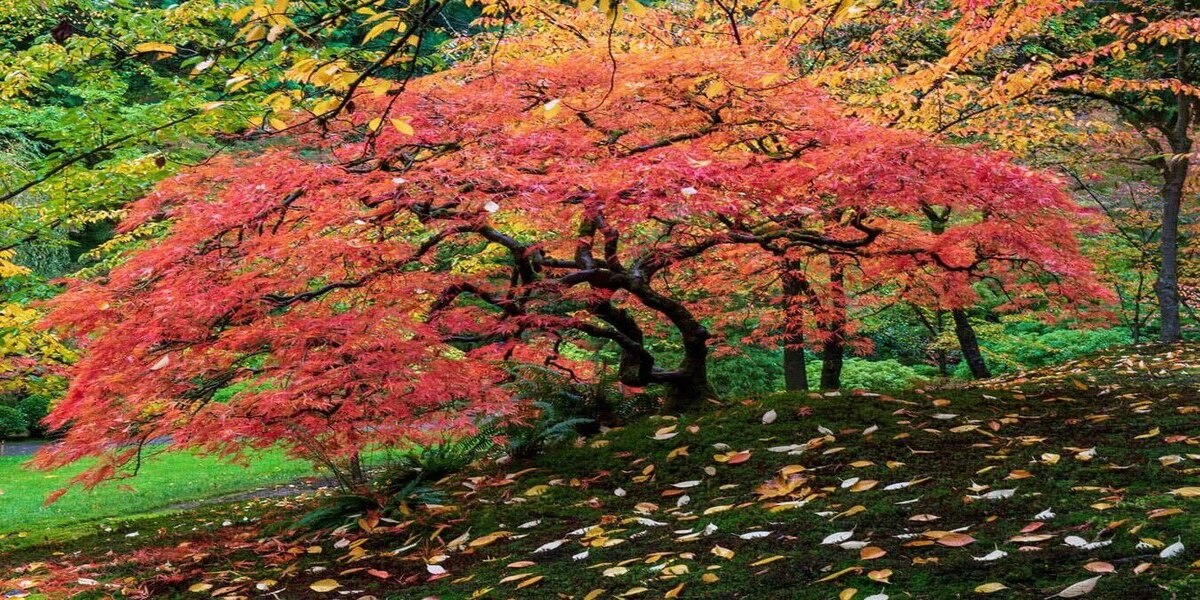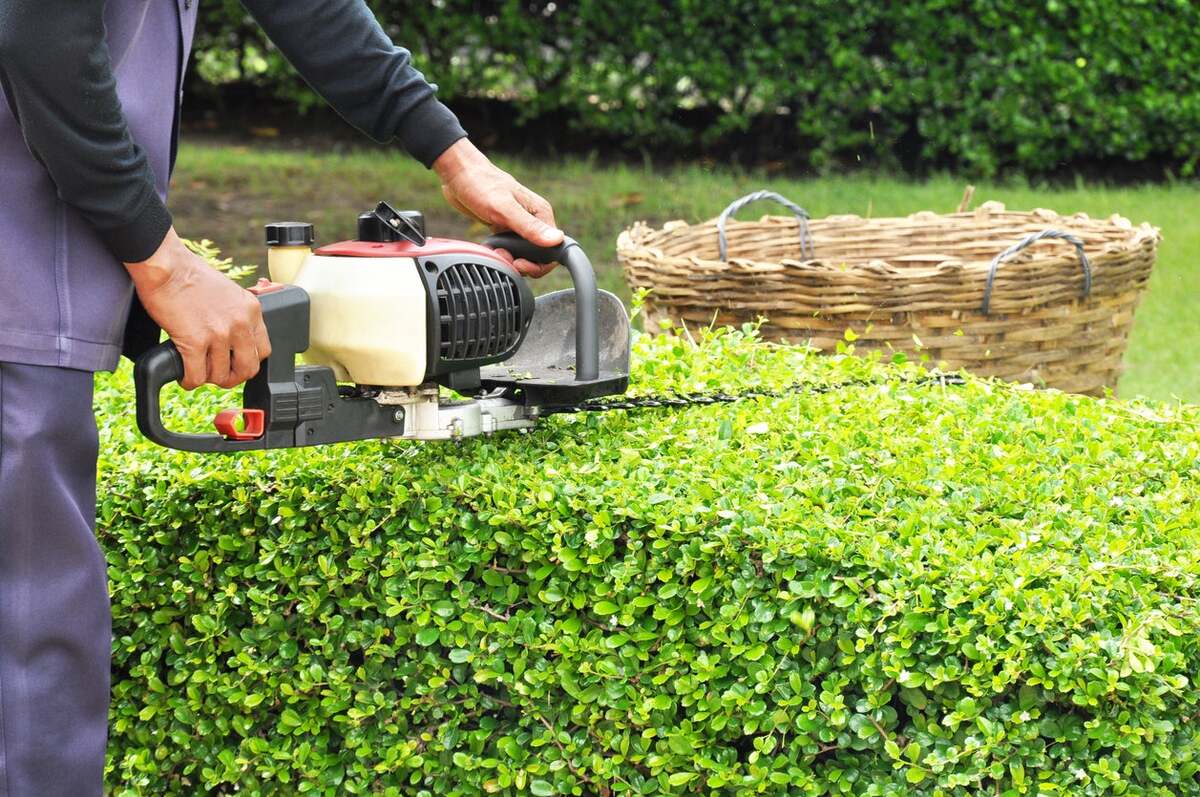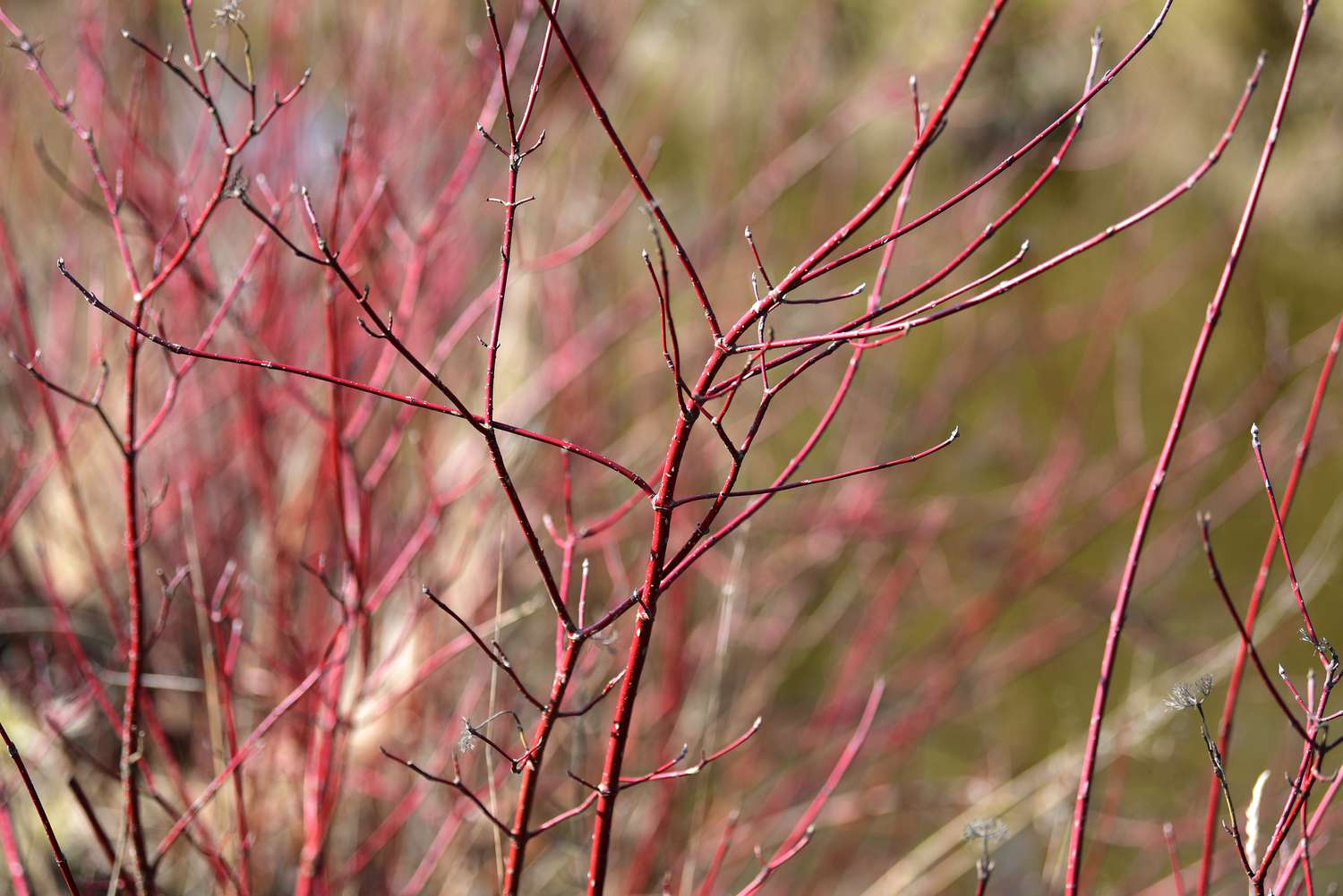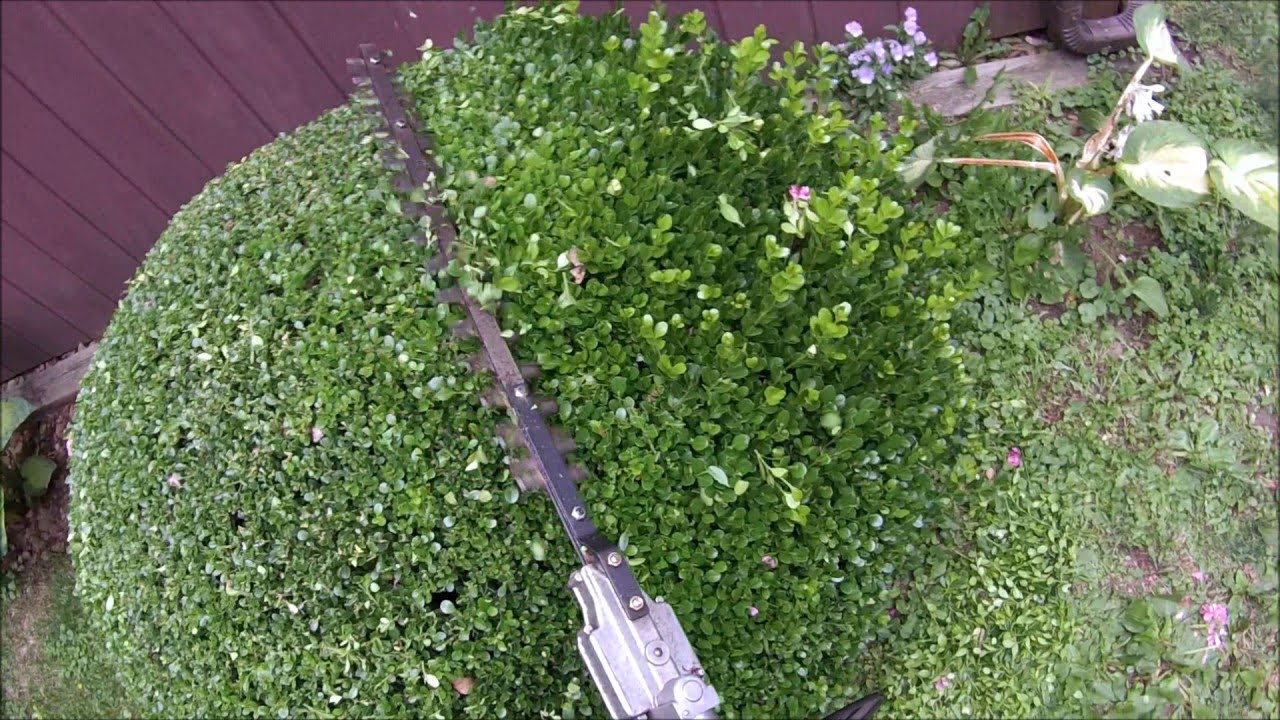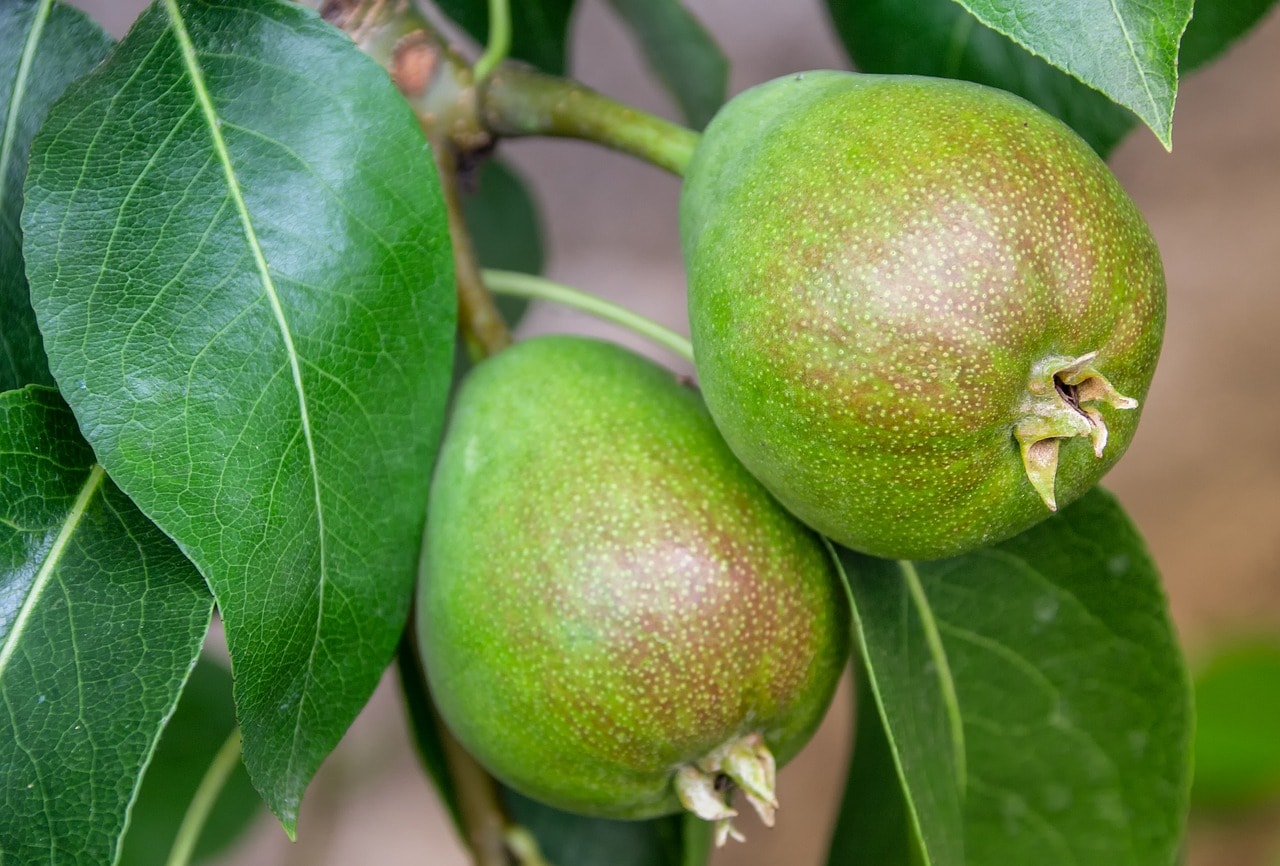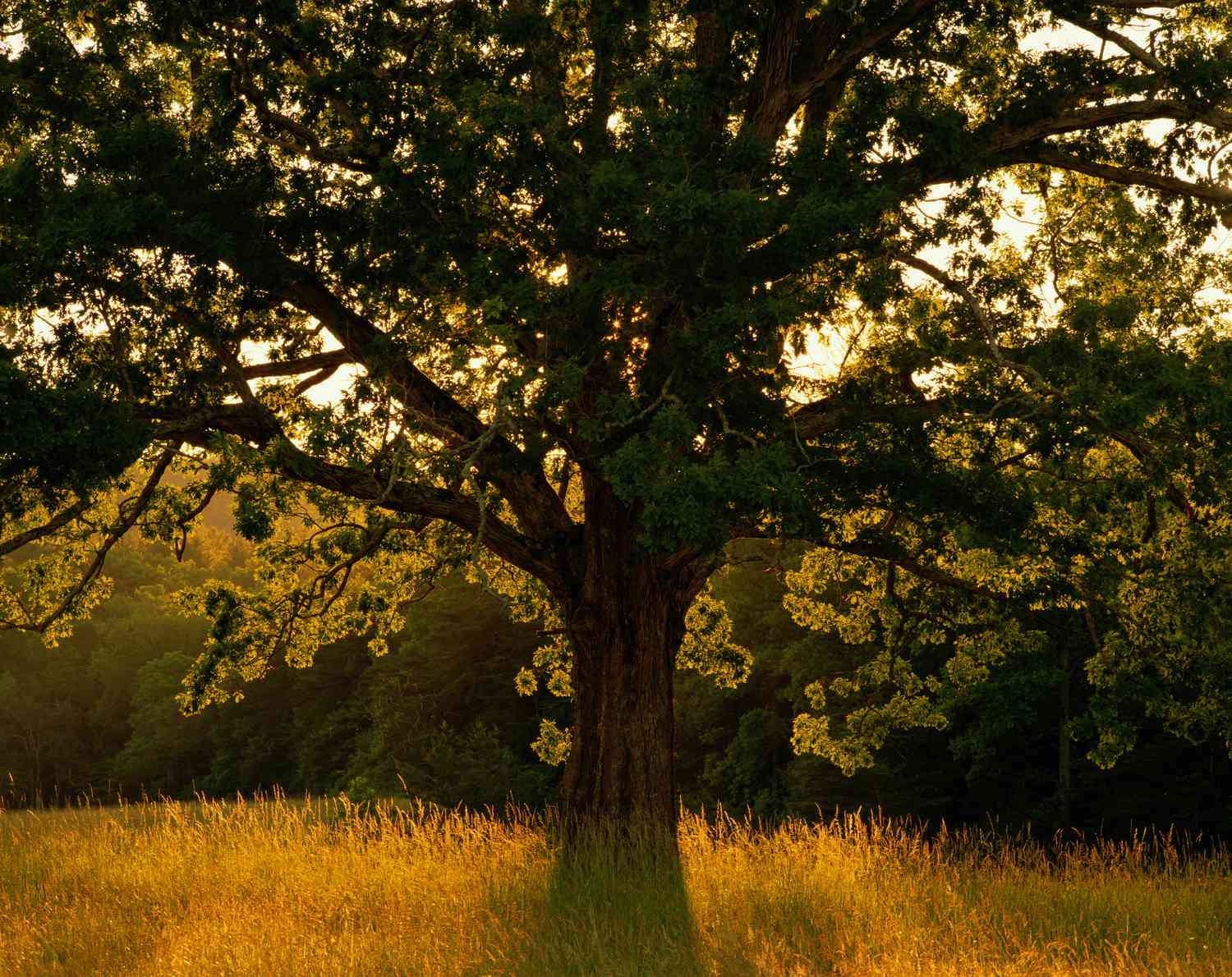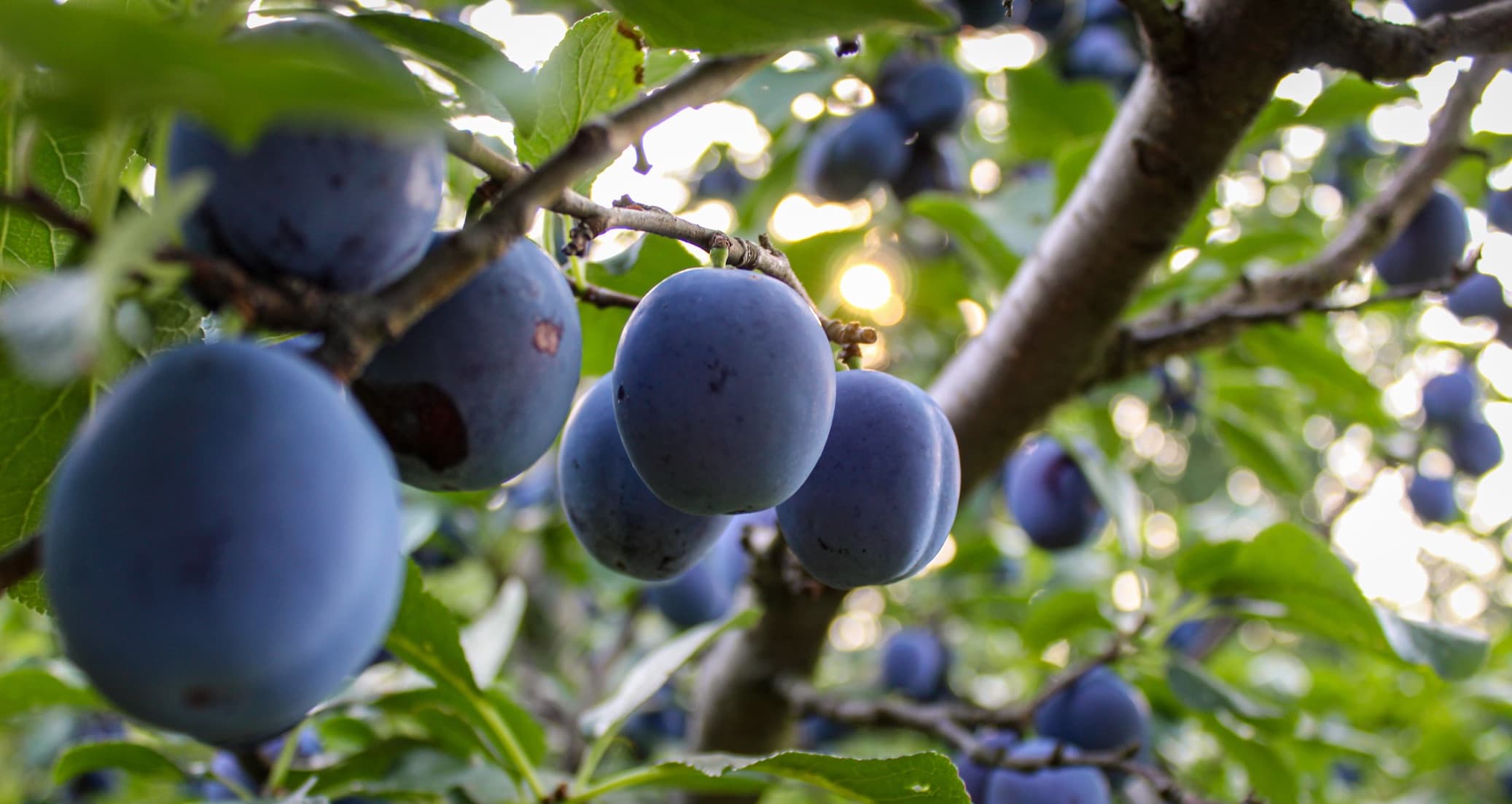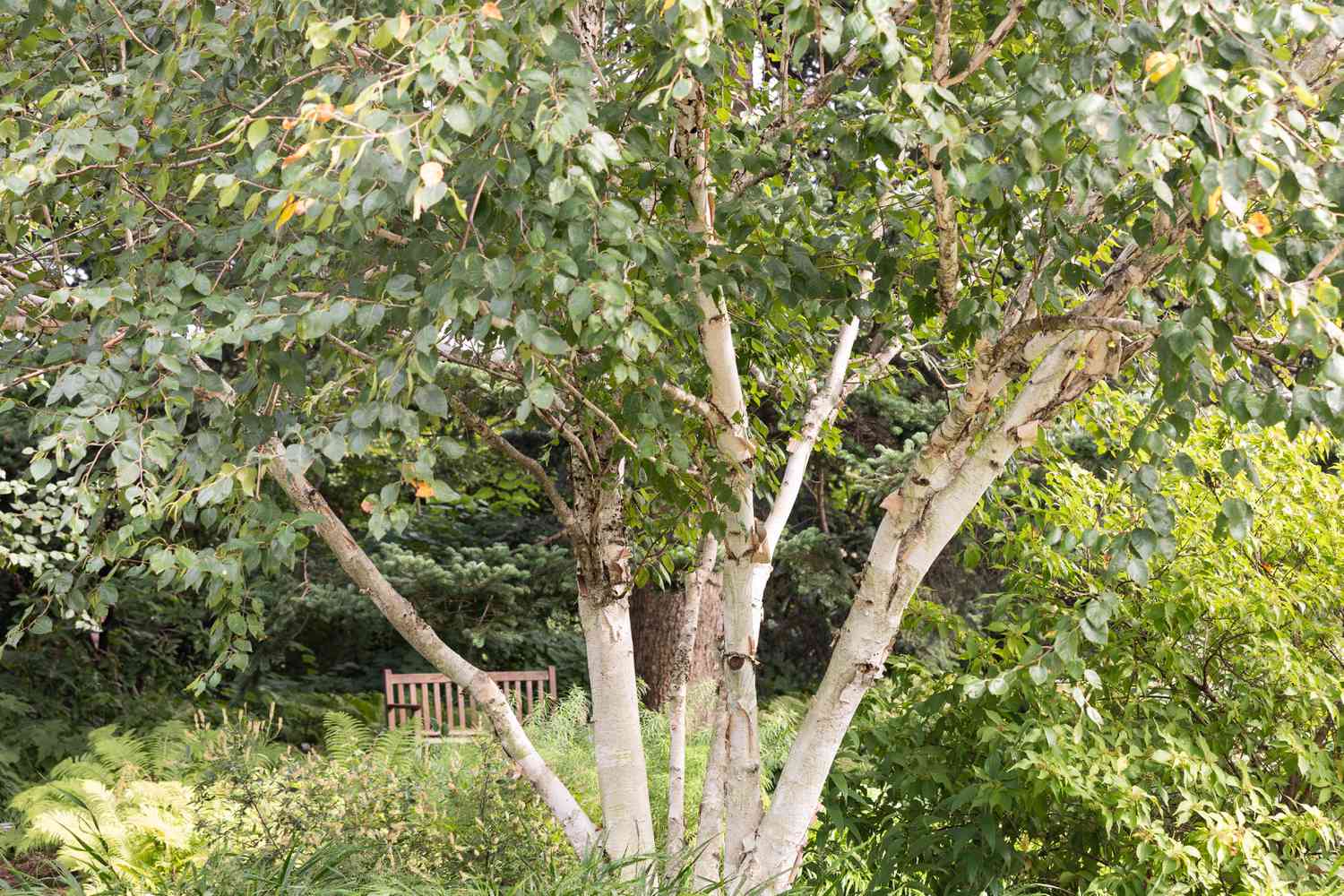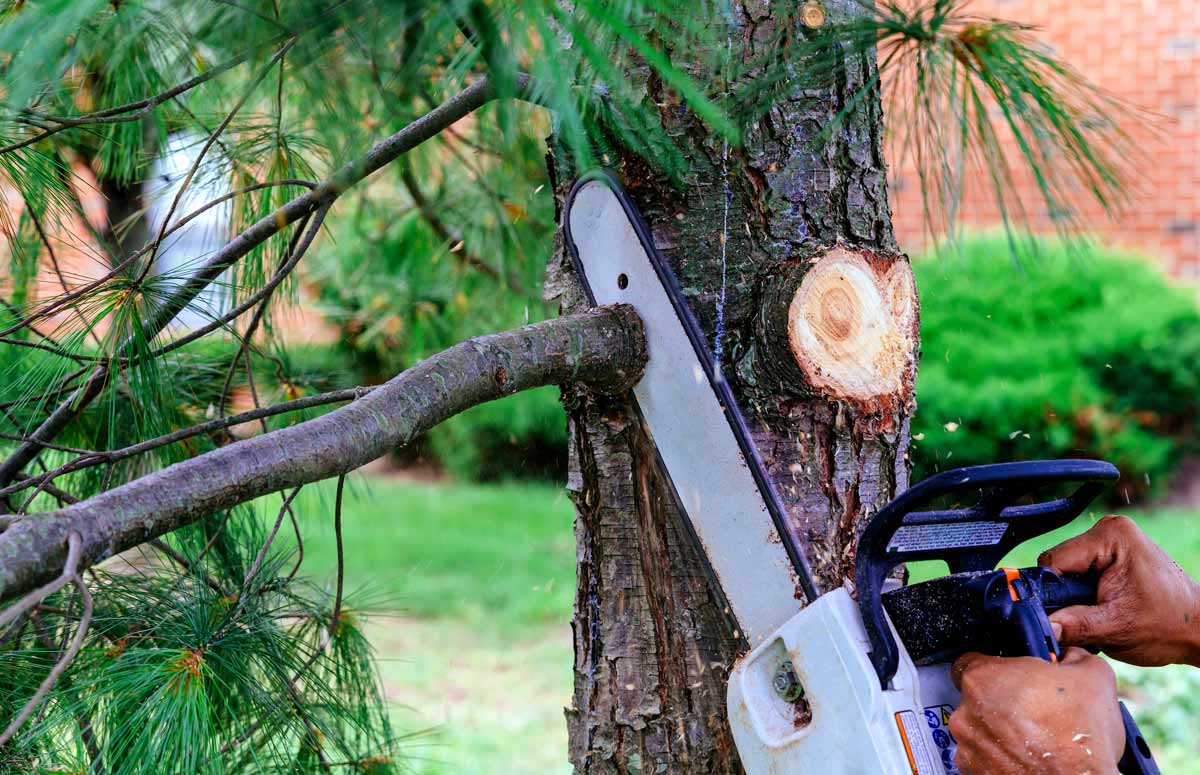Home>Gardening Techniques>Plant Care>When Is The Best Time To Trim Shrubs
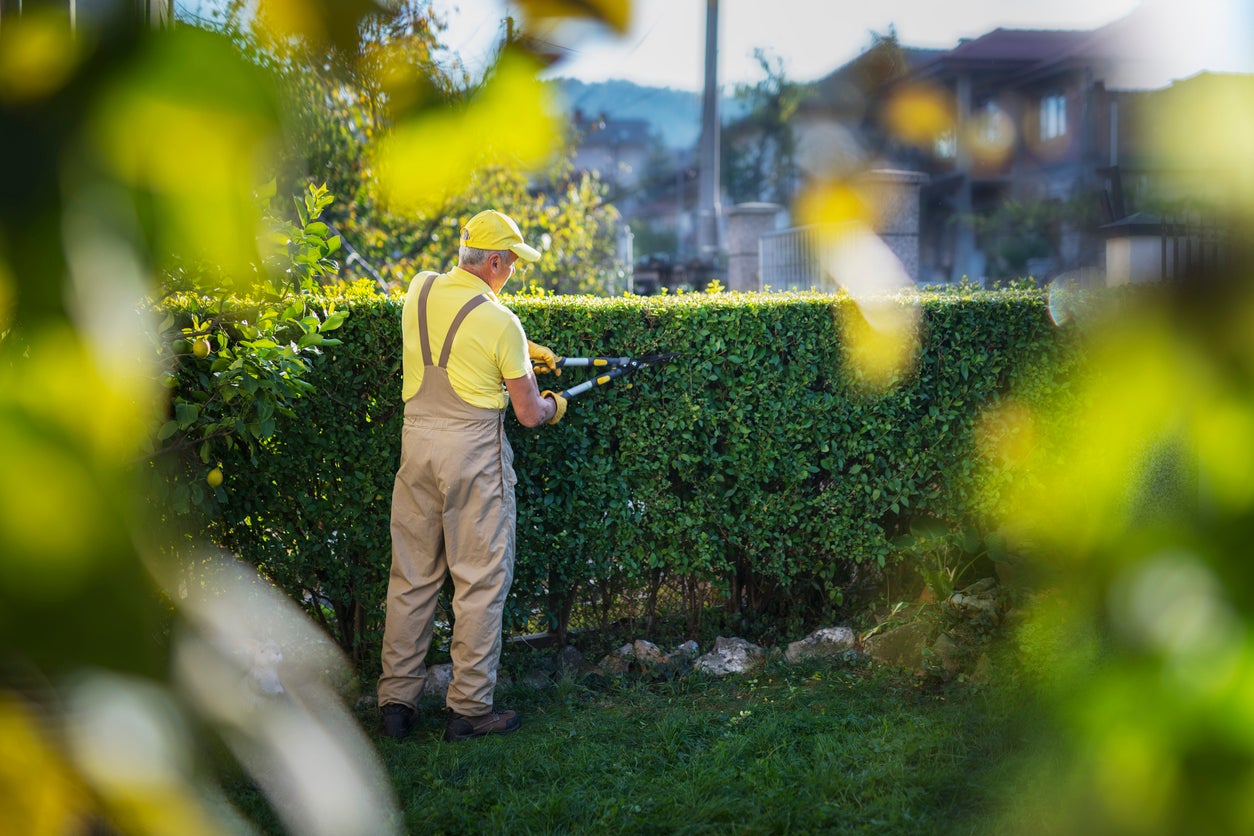

Plant Care
When Is The Best Time To Trim Shrubs
Modified: January 22, 2024
Learn the best time for shrub trimming and proper plant care to maintain a healthy garden. Find useful tips and expert advice for pruning shrubs effectively.
(Many of the links in this article redirect to a specific reviewed product. Your purchase of these products through affiliate links helps to generate commission for Chicagolandgardening.com, at no extra cost. Learn more)
Table of Contents
Introduction
Trimming shrubs is an essential aspect of plant care that helps maintain their health, shape, and overall appearance. However, knowing when to trim your shrubs can make a significant difference in their growth and vitality. Understanding the optimal time to prune your shrubs is crucial to ensure they thrive and flourish.
While it may be tempting to trim your shrubs whenever they appear overgrown or unruly, it’s important to consider various factors before picking up your pruning shears. This article will guide you through the key considerations, including the optimal season for trimming shrubs, the best time of day to perform the task, tips for different climates, and the essential tools and techniques required for effective pruning.
By adhering to proper pruning practices, you can promote healthy growth, encourage flowering, and maintain the desired shape and size of your shrubs. Whether you’re a beginner gardener or an experienced plant enthusiast, this comprehensive guide will provide you with the knowledge and tools necessary to achieve stunning results.
Factors to Consider Before Trimming Shrubs
Before diving into the process of trimming your shrubs, there are several important factors that need to be considered. By taking these factors into account, you can ensure that your pruning efforts are effective and beneficial to the overall health of your plants.
Growth Habit: Understanding the growth habit of your shrubs is crucial before starting the trimming process. Some shrubs produce flowers on new growth, while others bloom on old wood. Identifying the growth habit of your specific shrub will determine the appropriate time and method of pruning.
Species-Specific Requirements: Different shrub species have different pruning requirements. Some may need regular pruning to maintain their shape, while others may require minimal pruning. Research the specific needs of your shrub variety to avoid any potential damage or negative impact on growth.
Age: The age of your shrub can also influence the pruning approach. Younger shrubs generally require less pruning compared to more established ones. However, occasional shaping may still be necessary to encourage healthier growth.
Health Condition: It’s crucial to assess the health of your shrub before undertaking any pruning. If the plant is damaged, diseased, or infested with pests, it’s best to address these issues before proceeding with trimming. Trimming unhealthy shrubs can further weaken them and hinder their ability to recover.
Season: The time of year plays a significant role in determining when to trim your shrubs. Different seasons offer unique opportunities and challenges for pruning. Understanding the appropriate season for your specific shrub’s growth cycle is key to ensure optimal results.
Weather Conditions: Consider the prevailing weather conditions before pruning your shrubs. Extreme heat, cold, or heavy rain can impact the recovery and growth of pruned shrubs. It’s advisable to choose a day with mild temperatures and calm weather to minimize stress on the plant.
By carefully considering these factors, you can make informed decisions and ensure that your shrubs receive the appropriate care and attention they need.
Optimal Season for Trimming Shrubs
Choosing the right season to trim your shrubs is essential for their optimal growth and overall health. While some shrubs can be pruned throughout the year, there are specific seasons that are ideal for different types of shrubs. Understanding the growth habits of your shrubs and their blooming cycles will help you determine the optimal time for pruning.
Spring: Spring is a common season for pruning many shrubs. It is best to trim spring-flowering shrubs immediately after they finish blooming. Examples of popular spring-flowering shrubs include azaleas, lilacs, and forsythias. Pruning during this time allows them to develop new growth and set buds for the following year’s flowers.
Summer: Summer is a time of active growth for most shrubs. It is generally recommended to perform shaping or light pruning during this season. Trimming for size control and maintaining the desired shape can be done in summer. However, avoid doing any major pruning that may encourage new growth, as it may not have enough time to harden off before winter.
Fall: Fall is an ideal time to prune certain shrubs, especially those that bloom on new wood. Examples include butterfly bushes and some hydrangea varieties. Pruning in fall allows the shrubs to focus their energy on root development during the winter months, resulting in healthier growth the following year.
Winter: While winter is generally a dormant period for many shrubs, there are specific instances where pruning is appropriate. Late winter, before the spring growth begins, is an ideal time to prune fruiting shrubs such as blueberries and raspberries. It is also a suitable time to prune shrubs with structural issues or those that are prone to winter damage.
Remember, not all shrubs follow the same pruning schedule, so it is crucial to research the specific needs of your shrub variety. Understanding the optimal season for trimming your shrubs will ensure that the pruning is done at the right time to promote healthy growth, maintain shape, and enhance the overall appearance of your plants.
Best Time of Day to Trim Shrubs
While choosing the right season to trim your shrubs is important, the time of day when you perform the pruning can also impact the health and vitality of the plants. It’s essential to consider factors such as temperature, sunlight exposure, and the plant’s moisture levels before deciding on the best time of day to trim your shrubs.
Early morning: Trimming your shrubs in the early morning, just after the dew has dried, is often considered ideal. The temperatures are cooler, which helps prevent stress on the plants. This time of day allows the shrubs to recover and heal from the pruning cuts before the heat of the day sets in. Additionally, the morning sunlight provides ample natural light for the shrubs to thrive.
Late afternoon: Another suitable time for trimming shrubs is in the late afternoon. As the day starts to cool down, the plants have an opportunity to produce new growth after the pruning process. This gives them sufficient time to recover and heal overnight. However, be cautious of trimming too late in the day, as the plants may not have enough time to dry completely before evening, which can make them susceptible to fungal diseases.
Avoid midday: It’s advisable to avoid pruning shrubs during the hottest part of the day, typically between 10 am and 3 pm. The intense heat can stress the plants, and the pruning cuts may dry out too quickly, increasing the risk of damage or disease. Additionally, the midday sun can be harsh on freshly exposed plant tissue.
Consider the weather: In addition to the time of day, it’s important to consider the prevailing weather conditions. Avoid pruning during periods of extreme heat, as the combined stress of pruning and intense temperatures can be detrimental to the plants. Similarly, avoid pruning when rain is imminent, as wet conditions can promote the growth of fungal diseases.
By choosing the optimal time of day to trim your shrubs, you can minimize stress on the plants, promote faster healing, and encourage healthy growth. Always assess the specific conditions of your garden and the needs of your shrubs to determine the best time for pruning.
Trimming Shrubs in Different Climates
Trimming shrubs in different climates requires considering the specific weather conditions and growth patterns of the plants. Whether you live in a hot and dry climate or a cool and humid region, understanding how climate impacts pruning practices is crucial for maintaining healthy and thriving shrubs.
Hot and Dry Climates: In hot and dry climates, it’s important to be mindful of water conservation when trimming shrubs. Prune during the cooler parts of the day, such as early morning or late afternoon, to minimize water loss through transpiration. Focus on removing dead or damaged branches and thinning overcrowded areas to improve air circulation. Mulching around the base of the shrubs can help retain soil moisture and protect the roots from excessive heat.
Cool and Humid Climates: In cool and humid climates, moisture management is key. Pruning during dry periods is ideal to prevent the spread of fungal diseases. Thinning out dense growth helps improve airflow and reduces the risk of moisture build-up. Trimming in late winter or early spring allows the shrubs to develop new growth before the active growing season. Be cautious of pruning too late in the season, as new growth may be susceptible to frost damage.
Coastal Climates: In coastal areas, salt spray can pose a challenge for shrubs. Trimming in early spring after the threat of frost has passed allows the plants to recover from any winter damage. Consider choosing salt-tolerant shrub varieties and regularly rinse the foliage with fresh water to remove salt residue. Pruning to maintain shape and remove dead or damaged branches is essential for the health and aesthetics of coastal shrubs.
Mountainous Climates: Mountainous regions often experience extreme temperature fluctuations and heavy snowfall. Pruning in late winter or early spring, before the active growing season, allows the shrubs to recover from winter stress. Remove any broken or damaged branches caused by heavy snow or ice. Trimming during cooler periods helps avoid the risk of frost damage to new growth.
Every climate has its unique challenges, so it’s crucial to research and understand the specific needs of your shrub varieties. Consider consulting local gardening experts or professionals familiar with your specific climate for tailored advice on pruning practices in your area.
Tools and Techniques for Pruning Shrubs
Having the right tools and employing proper pruning techniques is essential to ensure effective and successful shrub trimming. By using the correct tools and following appropriate techniques, you can promote plant health, maintain desired shapes, and avoid potential damage. Here are some of the essential tools and techniques for pruning shrubs:
Hand Pruners: Hand pruners, also known as secateurs, are essential for cutting branches up to ¾ inch in diameter. Choose pruners with a bypass blade design, as they make clean cuts and reduce the risk of crushing plant tissue. Keep your hand pruners sharp to ensure clean cuts and minimize the chances of causing damage to shrubs.
Loppers: Loppers are used to cut thicker branches, usually up to 1 ½ inches in diameter. They have long handles and a scissor-like cutting mechanism, providing more leverage and strength. Look for loppers with a ratcheting mechanism for easier cutting of thicker branches.
Pruning Saw: A pruning saw is necessary for cutting large branches that are too thick for hand pruners or loppers. Ensure the pruning saw has a sharp blade with a comfortable grip, allowing you to make smooth and precise cuts. Use a pruning saw with a curved blade for better control and efficiency.
Hedge Trimmers: Hedge trimmers are useful for pruning and shaping shrubs with dense foliage, such as boxwoods or hedges. Electric or gas-powered hedge trimmers can make the task more efficient, but manual hedge trimmers with sharp blades can also work well for smaller shrubs.
Pole Pruners: Pole pruners are ideal for reaching higher branches without the need for a ladder. They consist of a long pole with a pruner or saw attached to the end. Pole pruners with adjustable lengths are useful for reaching different heights with ease and precision.
Cutting Techniques: When pruning shrubs, it’s important to use proper cutting techniques. Always make cuts at a slight angle, just above a bud or node, to promote new growth. Avoid leaving stubs, as they can become entry points for pests and diseases. Additionally, pruning back to the branch collar, the swollen area where a branch meets the trunk, helps facilitate healing and prevents unnecessary damage to the shrub.
Remember to clean your tools before and after each use to minimize the risk of spreading diseases among plants. Properly maintained tools, combined with appropriate techniques, will ensure that your shrubs are pruned effectively and with minimal harm.
Precautions and Tips for Trimming Shrubs
Trimming shrubs requires careful attention to detail and adherence to proper safety precautions. Following these precautions and tips will help ensure a successful and safe pruning experience:
Wear Protective Gear: Before starting your pruning tasks, it’s important to wear protective gear, such as gloves and safety glasses. Gloves protect your hands from thorns, sharp edges, and potential irritants. Safety glasses shield your eyes from debris, especially when trimming branches overhead.
Start with Small Cuts: Begin pruning with small, conservative cuts and assess the result before making larger cuts. This allows you to control the shape of the shrub and avoid the risk of over-pruning or damaging the plant’s structure.
Prune Dead or Diseased Branches: Removing dead or diseased branches is essential to maintain the overall health of the shrub. Prune them back to healthy tissue, ensuring that you make a clean cut just beyond the affected area.
Avoid Over-Pruning: Over-pruning can weaken shrubs and hinder their ability to produce flowers and foliage. It’s important to strike a balance between maintaining the shape of the shrub and preserving its health by only removing the necessary branches.
Know the Pruning Limits: Different shrubs have varying tolerance levels for pruning. Research and understand the specific pruning requirements of your shrub species to avoid excessive trimming that may inhibit growth or flowering.
Properly Dispose of Trimmings: Dispose of the pruned branches and trimmings properly. Compost or dispose of them in an appropriate manner, ensuring they are not left lying around where they can harbor pests or disease.
Learn and Observe Local Regulations: Some areas may have specific regulations regarding shrub pruning. Familiarize yourself with any local guidelines or restrictions before pruning, especially for native or protected plant species.
Regular Maintenance: Regularly maintaining your shrubs through light pruning and shaping throughout the year is more beneficial than occasional heavy pruning. Consistent maintenance encourages healthier growth and prevents the need for drastic pruning measures.
Consult Experts When Necessary: If you’re unsure about the appropriate pruning technique or the specific needs of your shrubs, don’t hesitate to seek advice from professional gardeners, horticulturists, or local plant nurseries. They can provide tailored guidance based on your specific shrub variety and local conditions.
By following these precautions and tips, you can ensure a successful pruning experience while promoting the health and beauty of your shrubs.
Conclusion
Trimming shrubs is a vital aspect of plant care that helps maintain their health, shape, and overall appearance. By considering factors such as the growth habit, species-specific requirements, age, health condition, season, and weather conditions, you can determine the optimal time for pruning. Additionally, knowing the best time of day to trim shrubs, based on temperature, sunlight exposure, and moisture levels, can further enhance the success of your pruning efforts.
It is crucial to use the right tools, such as hand pruners, loppers, pruning saws, hedge trimmers, and pole pruners, for each pruning task. Employ proper cutting techniques, such as making clean cuts at an angle just above a bud or node, to promote new growth and reduce the risk of disease. Precautions like wearing protective gear and disposing of trimmings properly are essential for a safe and effective pruning process.
Whether you live in a hot and dry climate, a cool and humid region, a coastal area, or a mountainous region, understanding your specific climate and its impact on shrub trimming is crucial. Adapt your pruning techniques accordingly to ensure the health and longevity of your shrubs in diverse climatic conditions.
Regular maintenance and careful pruning throughout the year, rather than sporadic and drastic pruning, can yield healthier and more visually appealing shrubs. Finally, when in doubt, consult experts or local resources for specific advice on pruning techniques and specific shrub varieties.
With a combination of knowledge, proper tools, careful techniques, and consideration of climate, you can confidently trim your shrubs, ensuring their growth, health, and beauty for years to come.
